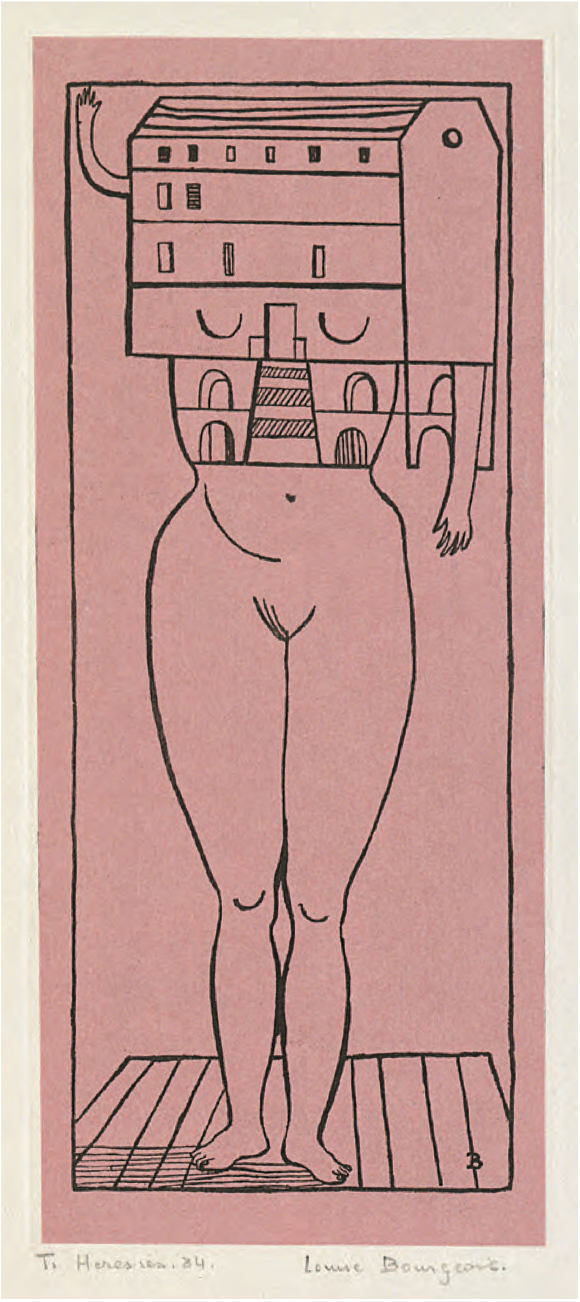
Louise Bourgeois, Femme Maison, State 2,
1984 [1947]. Image via Moma.

Louise Bourgeois is an artist who made prints and sculptures about women’s experiences in the world. She worked around the same time that McLuhan was writing communications theories based on metaphors harvested from the Female Gothic (that is, from Frankenstein). She has a different perception of the female body from McLuhan, as seen in her print Femme Maison (1947). Bourgeois describes the naked figure (whose upper torso and head are contained by a house, with arms and legs poking out) as one that “brings the personal together with the environment.”1 Femme Maison is “not sexual at all. Her head does not know that she is naked. She has no hair or bosom... they are occupied by work.”2 Intended as a “gendered depiction of the realities of a young mother confined at home with inescapable responsibilities,”3 the print exemplifies the female Gothic relationship between the body and the house using themes of confinement and birth. This confinement is interrupted by windows and doors that let bodies and environmental encounters in and out of the feminine vessel. The female body/house is haunted by themes of confinement but is also a “symbiosis of one with the universe.”4 The major difference that can be easily sensed between Bourgeois and McLuhan’s theoretical approaches to female bodies is that McLuhan is forever an outsider; Bourgeois inhabits.